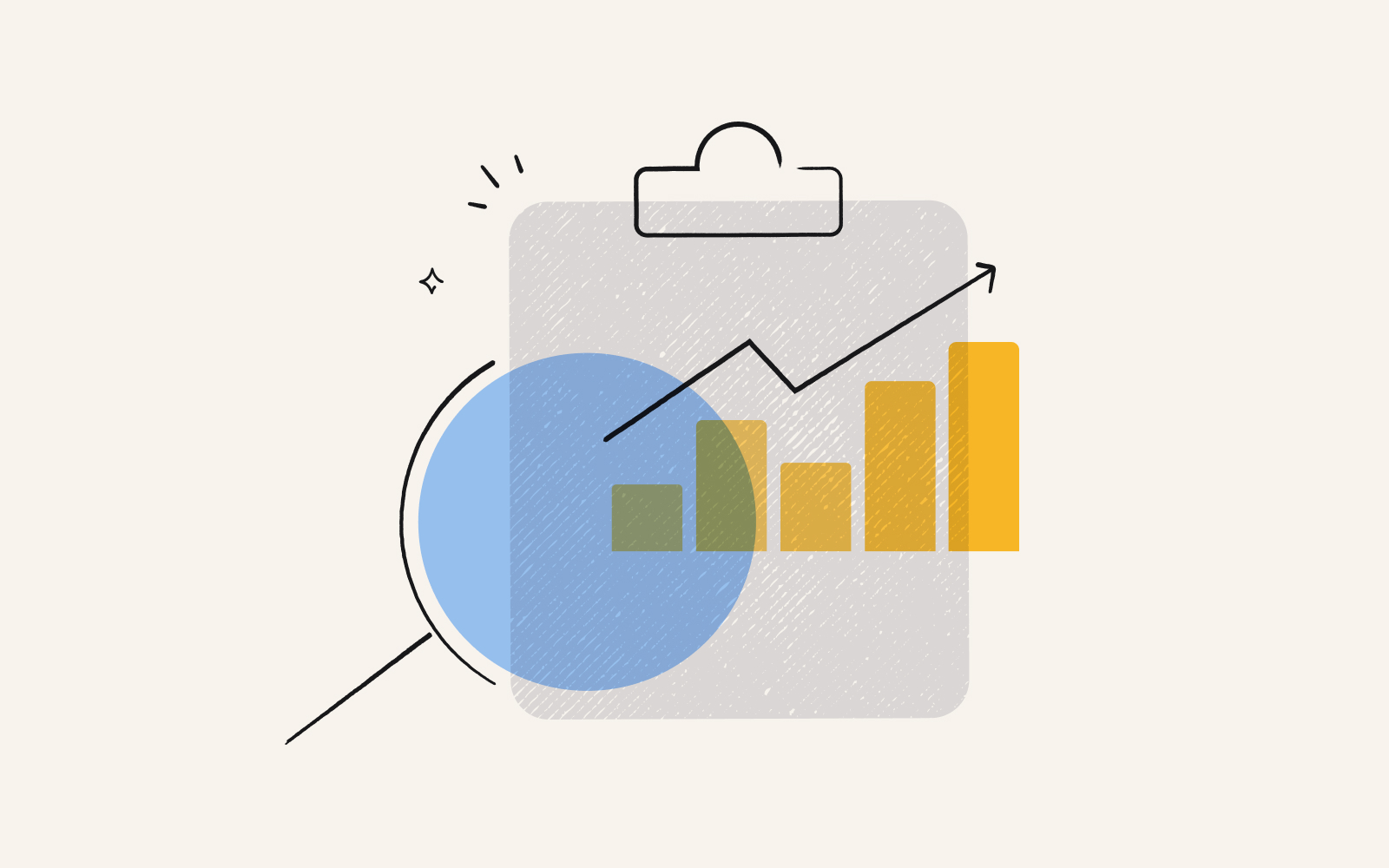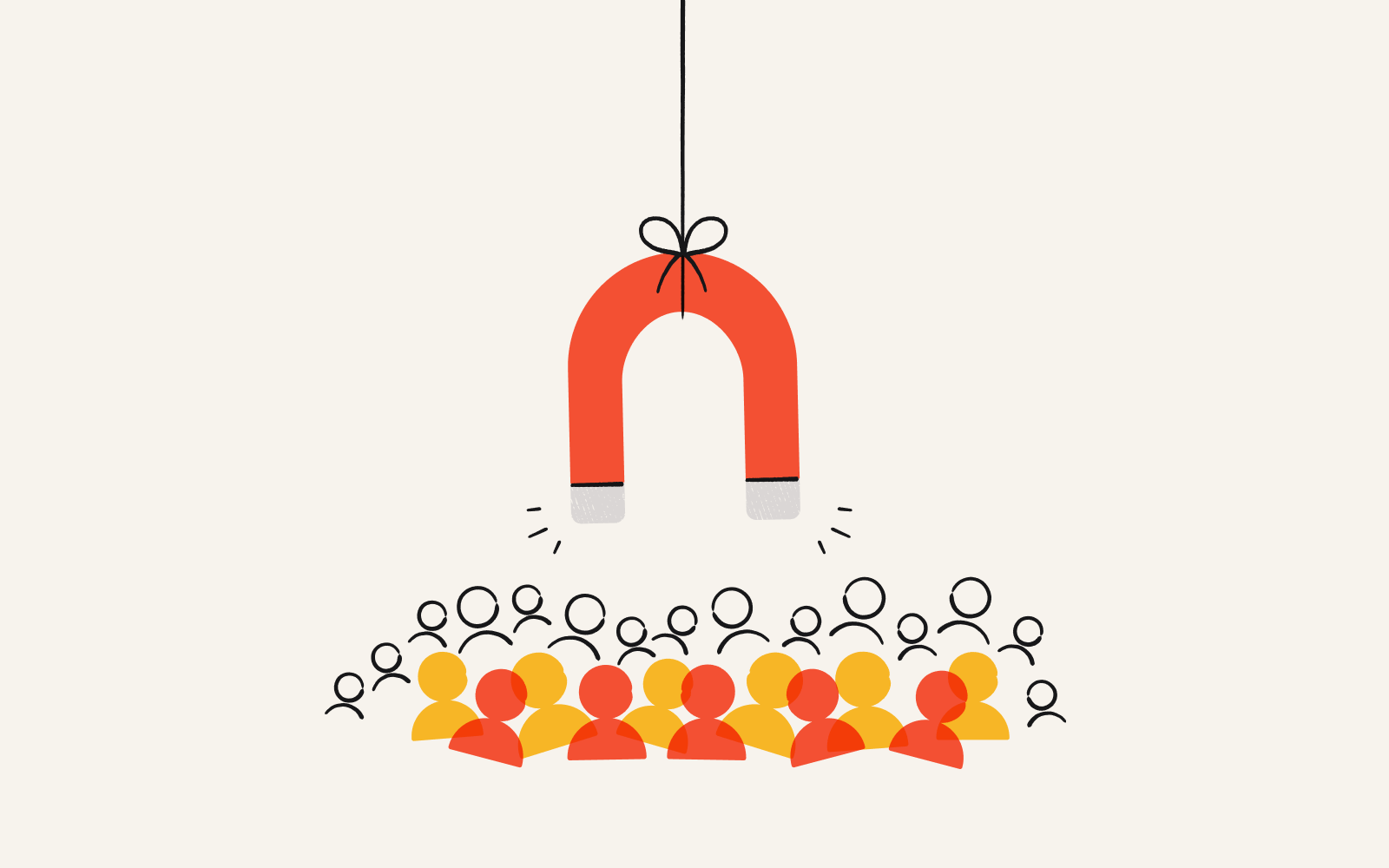B2B market research methods
By Laura Ojeda Melchor●6 min. read●Aug 23, 2024

Conducting market research as a business that sells products or services to other businesses is key to success. But for these business-to-business (B2B) organizations, the target audience isn’t individual people. It’s entire companies.
This can make B2B market research challenging. How do you reach the right respondents for a study? What B2B market research methods should you use once you do have an audience lined up?
We’ll answer these questions and more in this post.
What is B2B market research?
B2B market research is the process of talking to companies in your target audience to learn more about their needs. Like any other form of market research, the core goals of B2B market research are to:
Understand the needs of your target audience: Identify the needs, pain points, and preferences of business clients.
Identify market opportunities: Learn about new market segments, niches, and growth opportunities you haven't yet considered.
Evaluate the competition: Analyze your competitors' strengths, weaknesses, market positioning, and strategies, and use this information to improve your marketing efforts.
Improve product development: Understand what users are looking for in product design and development so you can maximize the value of your products or services.
Refine marketing strategies: Develop powerful marketing and sales strategies based on insights gleaned from your target audience.
It’s tempting to focus on building something amazing that’ll get you a ton of revenue. In decades past, this was the norm.
But in his book, Innovative B2B Marketing: New Models, Processes and Theory, Simon Hall—a University of Kent lecturer and marketing expert whose experience includes marketing roles at Dell UK, Toshiba, and Phillips—argues that even in B2B marketing, customer centricity is key.
Hall writes, “B2B marketers need to have a better grasp of organizational influences, and to better engage and communicate with businesses and stakeholders.”
In other words, even though you’re dealing with a business, those businesses are made up of people. Individual people or groups of people sign off on purchases, after all. Building relationships throughout the B2B market research process matters, just like it does in B2C marketing.
Types of B2B research
There are four types of B2B market research to know about before you start mapping out your strategy: primary, secondary, qualitative, and quantitative.
Here’s a closer look at each one.
Primary research
Primary research in B2B marketing involves collecting first-hand data directly from the target audience or market.
Businesses can collect this data from existing customers, but that's not the only way. They can also use their professional network—think LinkedIn, trade groups, and conference acquaintances—to create a custom research panel. Our guide to screener surveys can help you pick the right crowd.
If there’s not much time to do all this work yourself, pre-recruited research panels from market research firms can work well, too.
Popular methods for conducting primary research include:
Surveys and questionnaires: Send surveys to business clients or third-party research participants to gather data on their preferences and behaviors.
Interviews: Conduct one-on-one or group interviews in person, over the phone, or via video conferencing to gain in-depth insights.
Focus groups: Host structured group discussions moderated by a researcher to explore perceptions and opinions on specific products, services, or concepts.
Observations: Monitor and record the behavior of businesses in their natural environment to gather real-time data.
Experiments and pilots: Implement and test new products, services, or processes in a controlled setting to gauge their effectiveness—and the market response.
Case studies: Undertake detailed examinations of specific businesses or projects to understand their challenges, strategies, and outcomes.
Secondary research
In B2B market research, secondary research is all about analyzing data and information collected by other people. Here’s what it typically includes:
Industry reports: Studying reports published by research firms and market analysts can provide comprehensive data on specific industries or markets.
Company reports and publications: Businesses can learn a lot about the competition by reading financial reports, annual reports, white papers, and press releases from companies within the industry.
Government data: Statistics and data published by government agencies can help you understand your target audience. Think the U.S. Bureau of Labor Statistics, which provides economic indicators, performance data, and demographic information for various industries.
Online databases: Subscription-based databases and libraries can give you a wealth of information about different businesses. The Massachusetts Institute of Technology (MIT) has an excellent library of B2B market research database sources for all sorts of industries—including banking, tech, and healthcare—to help you get started.
Customer reviews and feedback: You’ll find an unexpected treasure trove of secondary research on your competitors’ review aggregator profiles—and your own. Feedback from these B2B customers is one of the most valuable forms of data you can find. Those unfiltered opinions can tell you what’s working for you and your competitors—and what isn’t.
Qualitative
Qualitative research focuses on understanding the motivations behind your customers' behaviors. Instead of collecting numbers, your goal is to gather comments, opinions, and other expressive responses.
In other words, qualitative research is more about quality and less about quantity.
As in B2C market research, qualitative research helps you understand customer needs in B2B marketing. The only difference is you'll be looking for insights from people who hold specific roles at businesses in your target industry.
Remember: you're not collecting data from businesses, but from the people who run them.
Qualitative research helps you understand the nuances behind the numbers you gather with quantitative research methods.
Quantitative
Quantitative B2B market research involves the systematic collection and analysis of numerical data. It's a lot more about cold, hard numbers and less about opinions and feelings. But the goal is the same: to understand market trends, behaviors, and patterns.
Quantitative data is ideal for drawing generalizations from a large sample population. Because of its opinion-heavy nature, quantitative data can take longer to collect. You have to set up and run focus groups, interviews, and other time-intensive research methods. Because of this, sample sizes are often small.
With quantitative methods, you can gain insights from a larger sample size. Just send out a multiple-choice or yes-or-no survey and you'll start raking in the answers from as many people as you want.
That said, quantitative data lacks the nuance you'll find with qualitative data.
Does this mean you shouldn't use it? Not at all. B2B researchers typically use a mixed-method approach that includes both types of data.
In a research article titled, “Iterative Mixed Method Approach to B2B SaaS User Personas,” published in the Association for Computing Machinery (ACM) Digital Library, researchers used a mixed method approach to study mixed method approaches in B2B research.
It’s all very meta.
In outlining their methods, the researchers write, “Survey data provided user background and insight into who to recruit while interviews provided insight into user journeys, personalities, and pain points.”
Long story short? Qualitative and quantitative data complement each other. Use them together to collect a well-rounded dataset. Use it to inform everything from product development to marketing campaign strategies.
Question examples
We asked ChatGPT to give us a list of questions to ask businesses during B2B market research. This list is a great starting point, and you can branch off in whatever direction suits your needs best. Feel free to copy-paste this list for your own use.
About the Business
Can you describe your business and its primary products or services?
What is the size of your company in terms of employees and revenue?
What industry does your business operate in?
Who are your main customers or client segments?
Decision-Making Process
Who is involved in the decision-making process for purchasing new products or services?
What factors are most important to your company when selecting a new vendor or supplier?
How long is your typical purchasing cycle?
What are the biggest challenges you face during the purchasing process?
Needs and Preferences
What are the top three challenges your business is currently facing?
What solutions or products are you currently using to address these challenges?
What features or benefits are most important to you in a product or service?
How do you prefer to receive information about new products or services (e.g., email, webinars, in-person meetings)?
Competitors and Market
Who are your main competitors, and how do you differentiate your business from theirs?
What trends do you see emerging in your industry over the next few years?
How do you stay informed about industry news and developments?
Satisfaction and Feedback
How satisfied are you with your current vendors or suppliers?
What improvements would you like to see in the products or services you use?
Have you faced any issues with your current vendors or suppliers? If so, how were they resolved?
What would prompt you to switch to a new vendor or supplier?
Budget and Spending
What is your budget for [specific product or service]?
How do you typically allocate your budget for [specific need or category]?
What factors influence your budget decisions?
Future Plans
What are your business goals for the next year?
Are you planning to expand or reduce your operations?
What new products or services are you considering adding to your offerings?
How to conduct B2B market research
With just 7 steps, you can conduct B2B market research to help you understand your customers on a deeper level. Here they are:
Define your objectives: Clearly outline your research goals. Determine what you need to learn, such as market size, customer needs, competitive landscape, or product feasibility.
Identify your target audience: Specify the types of businesses you need to reach, and then look for the key decision-makers in each business. Look for relevant department heads and members of the C-suite. If you sell a B2B SaaS solution for HR teams, for instance, your target audience is decision-makers in the HR department. Segment your audience based on industry, company size, location, and other relevant criteria.
Choose the research methods: For well-rounded results, use a mix of qualitative and quantitative methods. Common methods include primary research done through surveys, interviews, focus groups, and observations, as well as secondary research pulled from industry datasets.
Carefully design your research instruments: Work with your team to create tools like questionnaires and interview guides. Make sure your questions are clear, concise, and aligned with your research objectives. As much as possible, your goal is to avoid bias and draw valuable information out of your respondents.
Collect data: Deploy your chosen methods to gather data from a representative sample of your target audience. Use email, phone calls, social media, third-party research panels, or professional networks to reach participants. Smaller respondent pools are ideal for qualitative research, while larger ones work well for quantitative data.
Analyze the data: Examine the data you've collected to identify trends, patterns, and insights. For your quantitative data, use statistical analysis tools to interpret the results. More on those in a moment. For qualitative data, perform content analysis to uncover themes and key points.
Report and act on findings: Prepare a comprehensive report that outlines your B2B market research methodology, findings, conclusions, and recommendations. Use visual aids to present the data clearly to the rest of your team. Together, you can make informed decisions based on the insights you've gained from your research.
Tools
There are all sorts of B2B market research tools to help you with primary, secondary, quantitative, and qualitative research.
Our favorites include:
Qualtrics: With robust survey design and distribution capabilities, Qualtrics helps researchers reach their target audience quickly, no matter the size. Its advanced analytics and real-time reporting features provide valuable insights in a snap. This means you can use the data to make decisions almost as soon as you collect it.
Jotform: Jotform is fantastic for collecting survey data. One of its standout features is conditional logic, which allows researchers to create dynamic forms that adapt based on respondents' answers. This means participants only answer questions that are relevant to them. This, in turn, improves the accuracy and relevance of the data.
Statista: Statista is a go-to resource for secondary research. You can browse its huge database of statistics, studies, and reports across hundreds of industries and markets. Statista gets its data from reliable sources, including market research firms, government agencies, and professional industry associations.
Tremendous: Respondents are a lot more likely to participate in research if they receive compensation for their time. Tremendous helps you attract participants by making it easy and quick to deliver exactly the types of rewards they want. Check out our guide to sending research incentives for more tips.
Tremendous helps your B2B market research participants feel valued with rewards they'll love. We offer 2,000+ redemption options in over 200 countries. Sign up now and send your first reward in minutes or talk to our sales team.
Updated August 23, 2024


